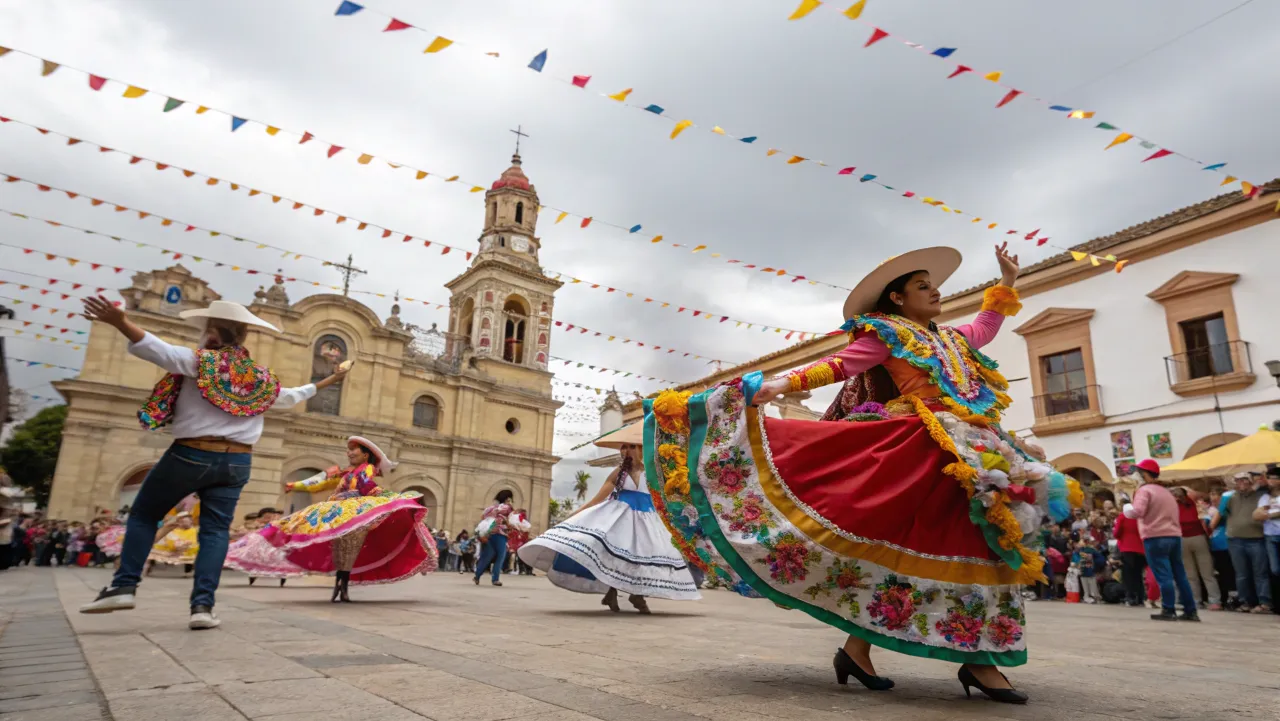Table of Contents
Nestled in the southern region of Bolivia, Tarija is a city renowned for its rich cultural heritage, breathtaking landscapes, and, most notably, its vibrant celebrations.
The celebraciones de Tarija (celebrations of Tarija) are a dazzling display of music, dance, gastronomy, and religious devotion, attracting visitors from across Bolivia and beyond.
From traditional festivals rooted in colonial history to lively modern events, Tarija’s festivities offer a unique glimpse into the heart of Bolivian culture.
In this article, we will explore the most iconic celebraciones de Tarija, their historical significance, and how they continue to shape the identity of this enchanting region.
The Most Iconic Celebraciones de Tarija
1. Festival de la Virgen de Chaguaya
One of the most deeply rooted religious celebrations in Tarija is the Festival de la Virgen de Chaguaya. Held every August in the small town of Chaguaya, this festival honors the Virgin of Chaguaya, the patron saint of the region. Pilgrims from across Bolivia embark on a spiritual journey, walking for days to reach the sanctuary.
The celebration blends Catholic traditions with indigenous rituals, featuring processions, folk dances, and offerings to the Virgin. The celebraciones de Tarija during this festival are marked by heartfelt devotion, vibrant music, and communal feasts, making it a must-see event for those seeking an authentic cultural experience. See Here: andrew garfield age
2. Carnaval de Tarija
While Bolivia is famous for the Oruro Carnival, Tarija has its own unique version filled with color, humor, and tradition. The Carnaval de Tarija is a lively affair where locals and visitors alike take to the streets in elaborate costumes, dancing to the rhythm of chuntunquis (traditional carnival music).
A standout feature of this celebration is the playful jueves de compadres y comadres (Thursday of godfathers and godmothers), where people exchange humorous gifts and engage in lighthearted pranks. The celebraciones de Tarija during Carnaval are a testament to the city’s joyful spirit and strong sense of community.
3. Fiesta de San Roque
Another cornerstone of Tarija’s cultural calendar is the Fiesta de San Roque, held in late August. This festival honors Saint Roch, the protector against plagues and epidemics, and is one of the most emotionally charged events in the region.
Devotees, known as churches, dress in ragged clothing and dance barefoot as a form of penance. The rhythmic sound of drums and flutes fills the air as processions wind through the streets. The celebraciones de Tarija during San Roque are a powerful mix of faith, tradition, and folklore, offering a deeply moving experience for participants and spectators alike.
Also Read: What Is a Celebration of Life? A Meaningful Alternative to Traditional Funerals
4. Vendimia Tarijeña (Tarija Wine Festival)
Tarija is Bolivia’s premier wine-producing region, and the Vendimia Tarijeña celebrates this legacy in grand style. Taking place in March, this festival marks the grape harvest with wine tastings, parades, and traditional dances.
Local wineries open their doors to visitors, offering tours and samples of Tarija’s famous singani (a grape-based spirit). The celebraciones de Tarija during the Vendimia are a feast for the senses, combining exquisite flavors, music, and the warm hospitality of the Tarijeño people.
The Cultural Significance of Celebraciones de Tarija
The celebraciones de Tarija are more than just parties—they are a living expression of the region’s history, spirituality, and communal bonds. Many of these festivals have origins dating back to colonial times, blending Spanish Catholic traditions with indigenous Andean customs.
For example, the Fiesta de San Roque reflects the syncretism between pre-Columbian rituals and colonial religious practices. Similarly, the Carnaval de Tarija incorporates elements of satire and social commentary, a tradition that can be traced back to indigenous resistance during Spanish rule.
These celebrations also play a crucial role in preserving Tarija’s intangible cultural heritage. Traditional dances like the churches and centers, along with regional music styles such as coplas and bailecitos, are passed down through generations during these festivals.
Why You Should Experience Celebraciones de Tarija
Visiting Tarija during one of its major festivals is an unforgettable experience. Here’s why:
- Authentic Cultural Immersion: Unlike commercialized events, Tarija’s celebrations remain deeply rooted in local traditions.
- Gastronomic Delights: From saice (a spicy meat stew) to humitas (sweet corn cakes), festival food is a highlight.
- Warm Hospitality: Tarijeños are known for their friendliness, making visitors feel like part of the community.
- Stunning Scenery: The backdrop of vineyards and rolling hills enhances the festive atmosphere.
Closing Words
The celebraciones de Tarija are a vibrant testament to Bolivia’s rich cultural tapestry. Whether it’s the solemn devotion of the Virgen de Chaguaya, the exuberance of Carnaval, or the joyous Vendimia wine festival, each event offers a unique window into the soul of Tarija.




